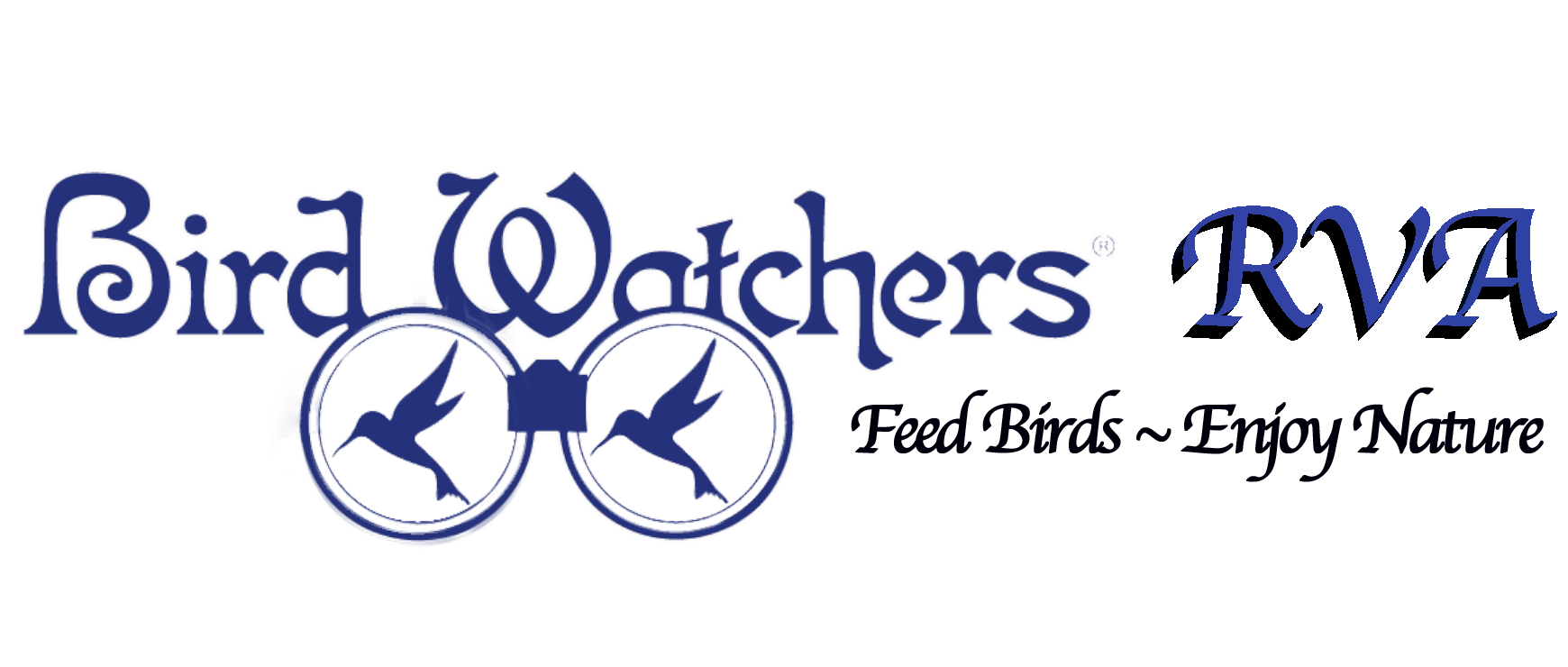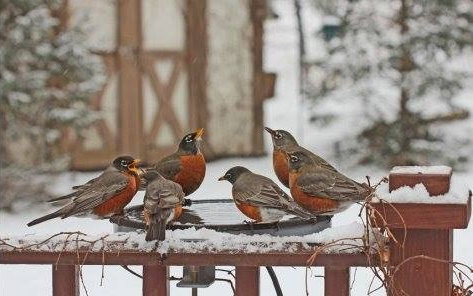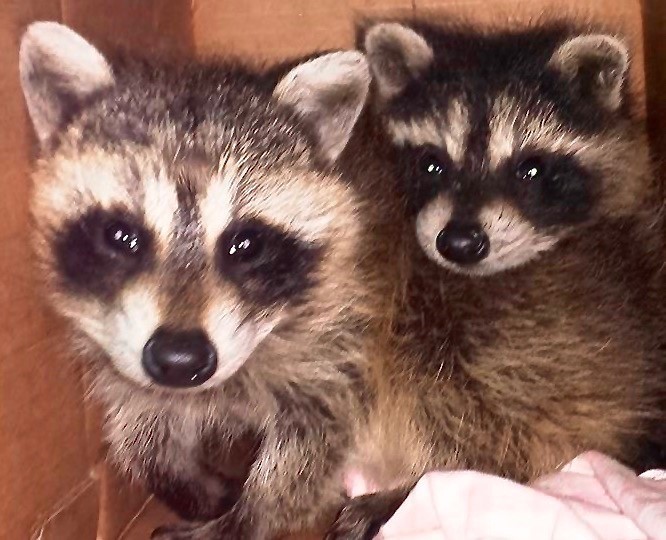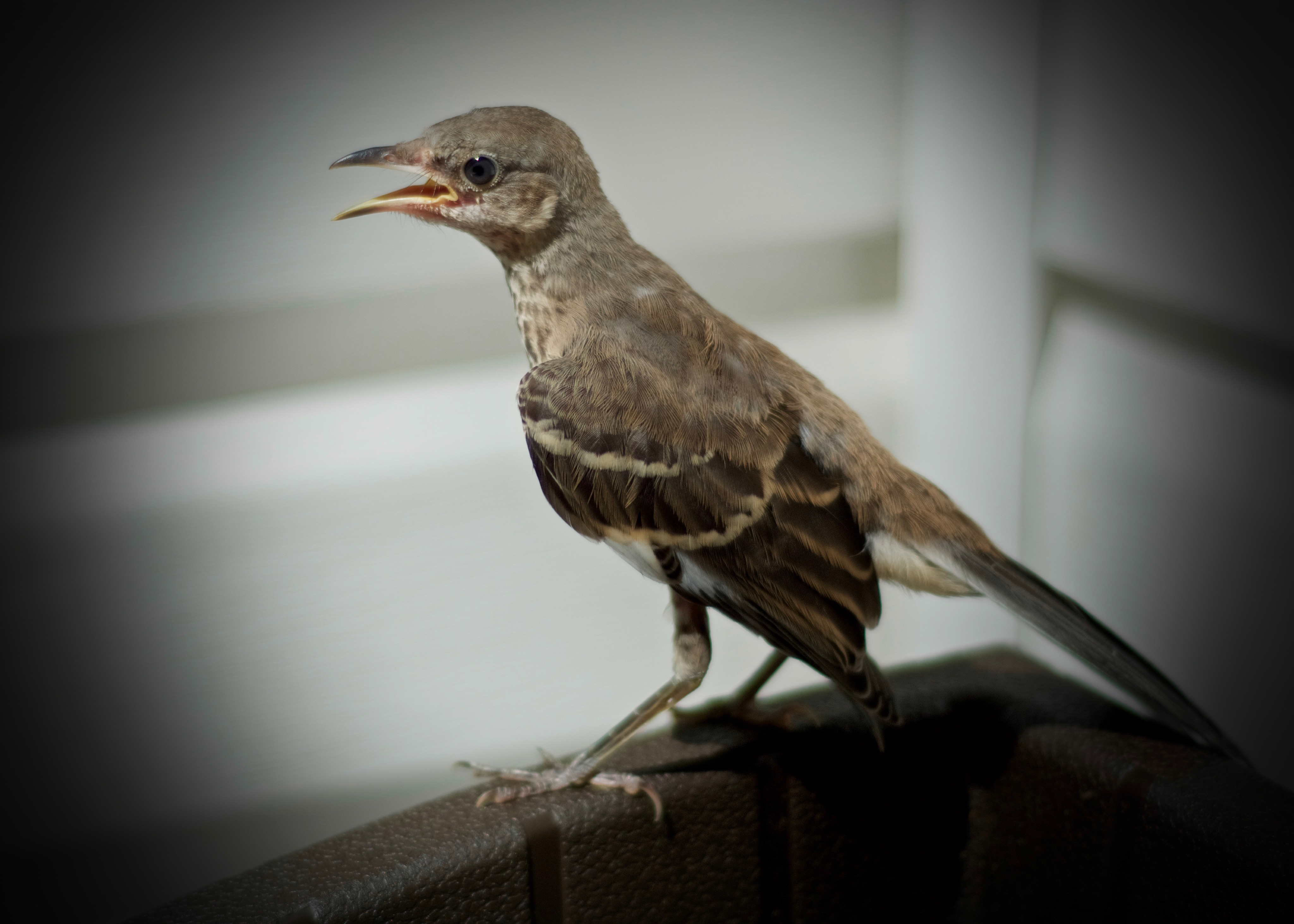Did you know, over 50 million Americans feed birds as a hobby each year?
There are many reasons we feed wild birds and many are for our own personal pleasure, but does it really help the birds?
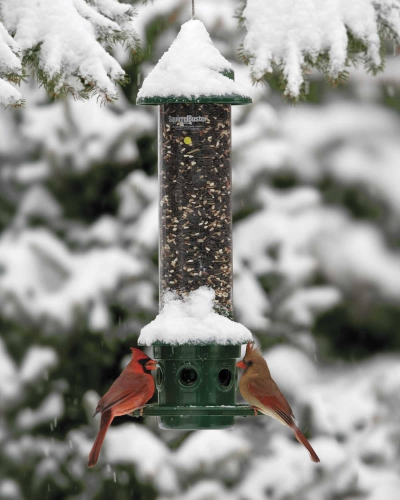
There are many reasons we feed wild birds and many are for our own personal pleasure, but does it really help the birds?
Some studies have shown that birds with access to bird feeders, especially in winter, survive at higher rates than birds without access to feeders.
Snow can be rather annoying for humans, but for wild birds it can be a matter of life and death. Feeding them during extreme cold and snowy seasons, is crucial to their survival.
Winter is the time to switch to more appropriate cold-weather foods. Birds need rich sources of fat and calories to combat low temperatures and severe storms. Put out high-energy foods, such as Suet, Meat Scraps, and Peanut Butter. Fat gives the biggest energy boost to winter birds, and without enough energy to keep them going, as many songbirds would not survive a cold winter night. Nuts and high-oil Seeds such as Nyjer, Black-oil Sunflower seeds and Sunflower Hearts are all great choices too.
Also, dried Mealworms offer a source of protein when there are very few insects. Be sure to place them in a heavy dish so the wind can’t blow the worms and dish away.
Surviving the winter, wild birds need:
Food Source ~ Water to Drink ~ Shelter to Roost
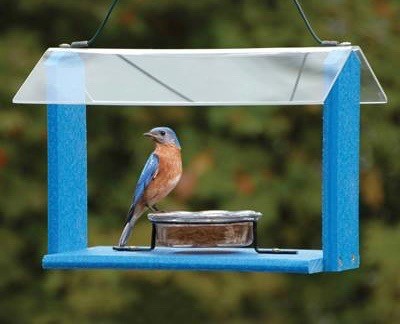
Food Source: We discussed what to feed the birds during these tough months but how do we feed them?
First of all, keep birdseed DRY! Feeders that have built-in covers or underneath feeding stations are best.
Adding baffles or covers to feeders in the winter can keep snow and ice from accumulating on the feeder and will also give birds a more protect-ed place to feed. Clear acrylic bowl-shaped baffles are popular for sheltering winter feeders, and many backyard birders improvise by creating feeder covers from old bowls, pie tins, umbrellas or other recycled materials.
Moving bird feeders to sheltered areas in winter can help protect them as well. This makes them easier to refill. Hang feeders from thick tree limbs close to the tree’s trunk, under the roof’s eaves or under a covered patio, deck or gazebo. The closer the feeders are to the house, the easier they will be to keep filled even in poor weather. Be sure your feeders are in areas that don’t also offer hiding places for cats and other predators by placing the feeders ten to twelve feet from shrubs or brush piles to give the birds some time to react.
Make sure you take steps to squirrel-proof bird feeders. For more information on this see our squirrel proofing blog.
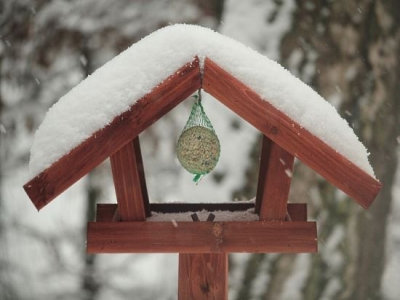
Avoid cloth netting feeders for winter Finches and Pine Siskins, as the cloth will hold moisture and cause seed to clump and spoil. Instead, opt for metal mesh feeders or tube feeders for Nyjer.
Clean off snow and ice after every storm, or during extended storms, to give birds easy access for feeding. Check that feeding ports are clear and seed can flow freely for birds to snack. Be sure to refill feeders frequently and shovel or trample snow in ground feeding areas to allow juncos, doves and other ground-feeding birds easy access to food, or position a large patio table or other cover over ground feeding-areas.
I like to scatter seeds and nuts on top of the snow on my deck several times throughout the storm. It makes it easy for the birds to find and provides enjoyment for me to watch my birds up close while staying nice and warm inside my house. I have to admit, once the snow melts, it can leave quite a mess. It is nothing that a quick spray with the hose can’t take care of however…
Water to Drink: Finding a source of unfrozen water is one of wild birds biggest challenges. Offering constant water will bring more birds to your yard during these cold times, then ever before. Heated Birdbaths are a great way to ensure your birds have access to water. Although they are called “heated”, they do not get hot or even warm. Most just keep the water barely above freezing.
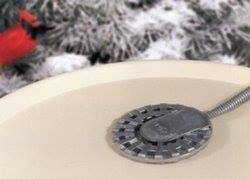
Never, ever add salt, antifreeze or other chemicals to the bird bath to keep the water from freezing. These chemicals can be fatal to the birds, even in small doses, as well as to other wildlife that might visit the bath for a winter drink.
Use properly rated outdoor extension cords to connect a heated bird bath or immersion heater.
Check all outlets and connections for proper operation to minimize the risk of any short circuits or other malfunctions.
As the snow accumulates, remove the snow around the bath so the birds have clear access.
Shelter to Roost: Roosting is the way wild birds stay warm. Small flocking birds such as chickadees, nuthatches and titmice manage cold northern winters by roosting in groups in tight cavities. Bluebirds are known to huddle together in bird houses. Be sure to keep your bird houses out all year for this purpose.
A few weeks ago, I opened Barry’s house (our Bluebird) at night to dis-cover a Downey Woodpecker sleeping inside. I was shocked and quickly closed the door as to not disturb her. She never moved at all.
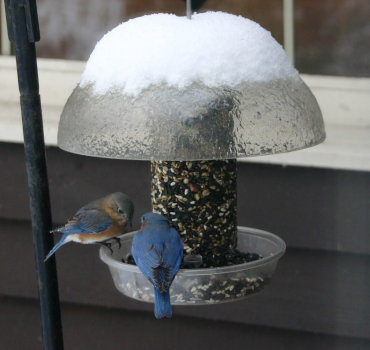
Birds can go into a state of “Torpor”, (a state of lower metabolism and body temperature to conserve energy). Hummingbirds regularly undergo torpor. Wintering birds such as Doves and Chickadees do so in extreme conditions as well.
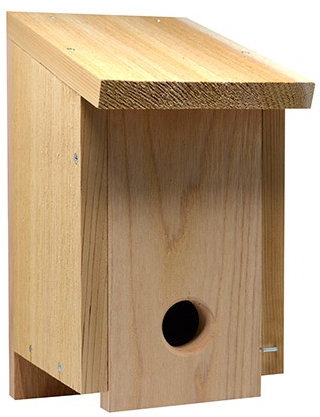
You can purchase winter Roosting Houses or Huts for your birds, or you can simply create a brush pile for birds to have shelter by randomly stacking sticks in one pile in your yard. Roosting houses have a hole in the bottom instead of the top of the door, to help keep in the heat that rises. They often have perches inside that will hold several birds at one time.
A few more helpful ideas:
For all of you procrastinators such as myself, if you leave your fallen leaves on the ground from autumn, the decaying leaf litter will provide a feast of insects, seeds, nuts and other treats for your backyard birds. Knowing this makes you feel less guilty for putting off the dreadful fall raking. LOL
Even during winter, seed-eating birds such as goldfinches and juncos will flock to the dried flower heads of aster, black-eyed Susans, cone-flowers, sunflowers and other plants. These wildflowers’ stalks also may house insects for birds that need a little protein.
Make sure to leave berries and other fruit on your native trees and bush-es. Birds ranging from robins, cardinals, juncos, waxwings and mocking-birds to wild turkey and grouse will feast on these fruits throughout the cold months.
Believe it or not, Hummingbirds have been known to winter in our area. Some Ruby-throated, Rufous & Anna’s have been spotted through-out the years. I keep a hummingbird feeder up year-round, just in case any happen to stop by. This year I actually had a Ruby-throated Humming-bird from October 31st thru November 11th!
Every little bit helps! Even if you cannot do everything we mention in this blog, adding one or two modifications to your winter feeding, will make a huge difference!
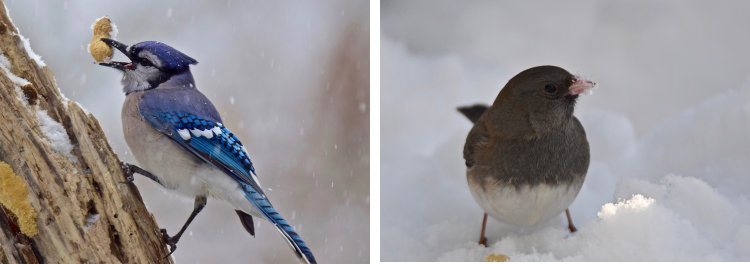
Remember:
Feed Birds ~ Enjoy Nature!
By, Lisa V.
